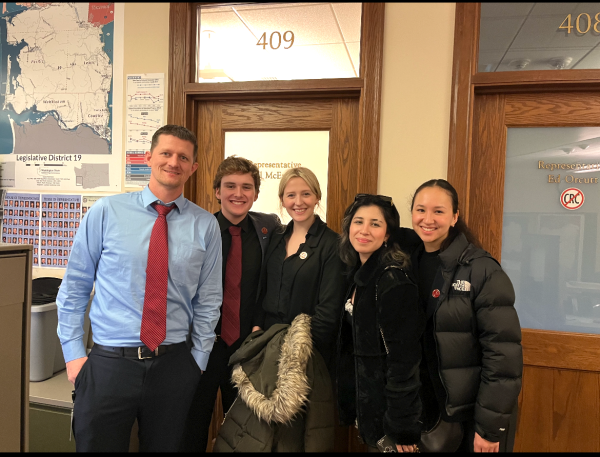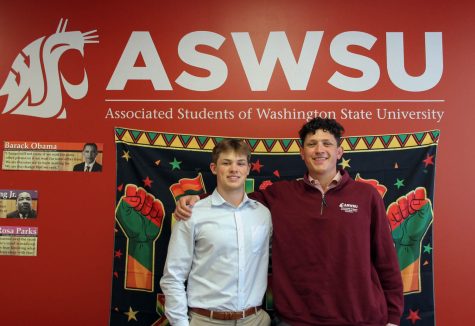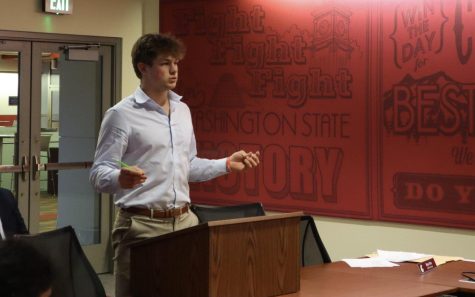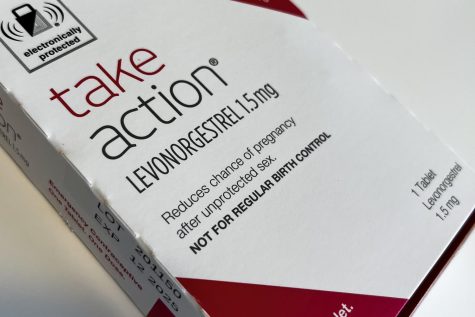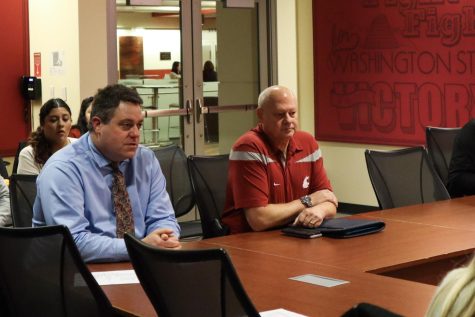Co-workers voice concerns over ISC president
February 27, 2017
Testimony from current and former International Student Council (ISC) executives states that President Kevin Lindquist has “bullied, disrespected and threatened fellow students” in his time as the head of the council.
The impeachment hearing against Lindquist has yet to be scheduled, but the evidence against him is now public record.
The investigation by the ASWSU Internal Committee began with a review of the initial Judicial Board decision in the case of Leslie Roman v. Lindquist in November. Lindquist had removed Roman from her executive position in ISC after what the Internal Committee determined was a miscommunication.
In the Judicial Board case, Lindquist claimed the reason he had removed her was that she was acting with “malice” and spreading “rumors” about him. He said this behavior was a violation of the ASWSU code of ethics. No one presented evidence to the Internal Committee to prove these claims of malice were true.
Lindquist acted with authority given to him by the “J-clause” in the ISC bylaws. This clause allows the president to make unilateral decisions in the event that the council is in jeopardy. The Judicial Board originally believed that Lindquist had not only misused this clause, but that he had also written it and been present when it was ratified in April 2016.
Lindquist said he has evidence that will prove this is untrue, including statements from members who were present at the meeting in which the bylaws were ratified, and the minutes from the meeting.
“We consider President Lindquist’s use of the ISC bylaws to unilaterally terminate an elected Executive Officer with the intention of silencing criticism of his leadership to be an unacceptable abuse of presidential power,” the Internal Committee stated in its report.
After reviewing the Judicial Board’s decision, the Internal Committee reviewed testimony from ISC executive members about Lindquist and his presidency. These testimonies were collected by ASWSU Sen. Jagjeet Gill, who is also the ISC vice president of programming. Gill was asked by the committee to collect this testimony because she was personally familiar with the members of ISC.
Gill spoke with several people and typed up a written testimony outlining how Lindquist had violated the ASWSU code of ethics sections 1100.04 B, C, D and G. After she typed the testimony, the people with whom she had spoken read it for accuracy. They then signed the document, acknowledging that everything included in it was true.
Many of the people included in the testimony requested to remain anonymous and their names were redacted from the public version. These people expressed their fear of Lindquist to the Internal Committee, saying they believed he might target them personally if their names were revealed.
Sections 1100.04 B, C, D and G outline the conduct to which members must hold themselves with regard to communicating, resolving conflict, evaluating differing opinions and making decisions. Testimony stated Lindquist had a hard time working with others, receiving criticism and communicating in his role as president.
One member said Lindquist threatened to remove executives from the ISC cabinet for minor offenses and mistakes. The testimony said he bullied and targeted those who disagreed with him and did not acknowledge his own mistakes and failures.
“If you are an executive member in Lindquist’s cabinet it is best to not disagree and do as the president wishes,” the same student said.
Sen. Matthew Morrow, a member of the Internal Committee, presented the articles of impeachment to the Senate at its Feb. 22 meeting. He said the recommendation to impeach was based solely on the evidence they collected and reviewed. He said neither he nor anyone else on the Internal Committee has a personal vendetta against Lindquist, but they could not ignore what he described as “damning” testimony.
Morrow said the Senate has an obligation to ensure the 12 programming committees it oversees are running effectively and “all members of student government are held to the high standards they are sworn to uphold.”
Lindquist said he believes the Senate cannot remove him because he is not an executive member of ASWSU, but instead is an executive of his own council.
The Internal Committee sent a request to the Judicial Board for clarification on the removal of executive members and whether executive members of committees were included in this rule. The Judicial Board determined that the chair of a committee is an executive, and they are subject to the same removal process outlined in the bylaws.
“The Judicial Board has extreme power to make up anything they want,” Lindquist said.
Lindquist said he believes the correct removal procedure is within the ISC bylaws. He said these bylaws outline an internal ISC vote of no confidence. He also said if this were to happen, it would go in his favor because he has a “95 percent approval rating.”
Lindquist also asserted that pieces of the testimony written by Gill were fabricated. Although the testimony was signed by all involved parties, Lindquist said he will present his own testimonies in which people will state their comments were falsely represented.
Gill refuted these claims, saying everything written is true and everyone who signed was well aware of what their testimony indicated. It is unclear at this time who Lindquist may be indicating, since every name on the testimony is redacted.









